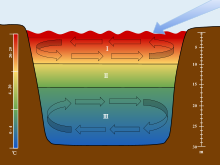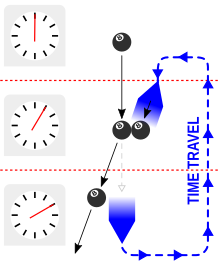
The politics of outer space includes space treaties, law in space, international cooperation and conflict in space exploration, international economics and the hypothetical political impact of any contact with extraterrestrial intelligence.
Astropolitics, also known as astropolitic, has its foundations in geopolitics and is a theory that is used for space in its broadest sense.
International cooperation on space projects has resulted in the creation of new national space agencies. By 2005 there were 35 national civilian space agencies.
Outer Space Treaty

The Outer Space Treaty, formally the Treaty on Principles Governing the Activities of States in the Exploration and Use of Outer Space, including the Moon and Other Celestial Bodies, is a multilateral treaty that forms the basis of international space law. Negotiated and drafted under the auspices of the United Nations, it was opened for signature in the United States, the United Kingdom, and the Soviet Union on 27 January 1967, entering into force on 10 October 1967. As of August 2023, 114 countries are parties to the treaty—including all major spacefaring nations—and another 22 are signatories.
The Outer Space Treaty was spurred by the development of intercontinental ballistic missiles (ICBMs) in the 1950s, which could reach targets through outer space. The Soviet Union's launch of Sputnik, the first artificial satellite, in October 1957, followed by a subsequent arms race with the United States, hastened proposals to prohibit the use of outer space for military purposes. On 17 October 1963, the U.N. General Assembly unanimously adopted a resolution prohibiting the introduction of weapons of mass destruction in outer space. Various proposals for an arms control treaty governing outer space were debated during a General Assembly session in December 1966, culminating in the drafting and adoption of the Outer Space Treaty the following January.
Key provisions of the Outer Space Treaty include prohibiting nuclear weapons in space; limiting the use of the Moon and all other celestial bodies to peaceful purposes; establishing that space shall be freely explored and used by all nations; and precluding any country from claiming sovereignty over outer space or any celestial body. Although it forbids establishing military bases, testing weapons and conducting military maneuvers on celestial bodies, the treaty does not expressly ban all military activities in space, nor the establishment of military space forces or the placement of conventional weapons in space. From 1968 to 1984, the OST birthed four additional agreements: rules for activities on the Moon; liability for damages caused by spacecraft; the safe return of fallen astronauts; and the registration of space vehicles.
OST provided many practical uses and was the most important link in the chain of international legal arrangements for space from the late 1950s to the mid-1980s. OST was at the heart of a 'network' of inter-state treaties and strategic power negotiations to achieve the best available conditions for nuclear weapons world security. The OST also declares that space is an area for free use and exploration by all and "shall be the province of all mankind". Drawing heavily from the Antarctic Treaty of 1961, the Outer Space Treaty likewise focuses on regulating certain activities and preventing unrestricted competition that could lead to conflict. Consequently, it is largely silent or ambiguous on newly developed space activities such as lunar and asteroid mining. Nevertheless, the Outer Space Treaty is the first and most foundational legal instrument of space law, and its broader principles of promoting the civil and peaceful use of space continue to underpin multilateral initiatives in space, such as the International Space Station and the Artemis Program.Moon Treaty
The Agreement Governing the Activities of States on the Moon and Other Celestial Bodies, better known as the Moon Treaty or Moon Agreement, is a multilateral treaty that turns jurisdiction of all celestial bodies (including the orbits around such bodies) over to the participant countries. Thus, all activities would conform to international law, including the United Nations Charter.
It has not been ratified by any state that engages in self-launched human spaceflight (e.g. the United States, Russia (or its predecessor the Soviet Union), or the People's Republic of China) since its creation on December 18, 1979, and thus it has little to no relevancy in international law. As of January 2022, 18 states are parties to the treaty.Artemis Accords
The Artemis Accords builds on a number of treaties that affect the conduct of States and their commercial industries in the exploration and use of space, including the 1967 Outer Space Treaty, the 1972 Liability Convention and the 1975 Registration Convention. NASA has stated that in leading the Artemis program, international partnerships will prepare for a historic human mission to Mars while playing a key role in achieving a sustainable and robust presence on the Moon. The core of the Artemis agreement requires that all activities be conducted for peaceful purposes, consistent with the principles of the Outer Space Treaty. International cooperation under the Artemis Agreement aims not only to promote space exploration, but also to strengthen peaceful relations between nations.
Post-detection policy
A post-detection policy (PDP), also known as a post-detection protocol, is a set of structured rules, standards, guidelines, or actions that governmental or other organizational entities plan to follow for the "detection, analysis, verification, announcement, and response to" confirmed signals from extraterrestrial civilizations. Though no PDPs have been formally and openly adopted by any governmental entity, there is significant work being done by scientists and nongovernmental organizations to develop cohesive plans of action to utilize in the event of detection. The most popular and well known of these is the "Declaration of Principles Concerning Activities Following the Detection of Extraterrestrial Intelligence", which was developed by the International Academy of Astronautics (IAA), with the support of the International Institute of Space Law. The theories of PDPs constitute a distinct area of research but draw heavily from the fields of SETI (the Search for Extra-Terrestrial Intelligence), METI (Messaging to Extra-Terrestrial Intelligence), and CETI (Communication with Extraterrestrial Intelligence).
Scientist Zbigniew Paptrotny has argued that the formulation of post-detection protocols can be guided by three factors: terrestrial society's readiness to accept the news of ET detection, how the news of detection is released, and the comprehensibility of the message in the signal. These three broad areas and their related subsidiaries comprise the bulk of the content and discourse surrounding PDPs.Politics of the ISS

In 1972 a milestone was reached in co-operation between the United States and the Soviet Union in space with the Apollo-Soyuz Test Project. The project occurred during a period of détente between the two superpowers, and led in July 1975 to Soyuz 19 docking with an Apollo spacecraft.
From 1978 to 1987, the USSR's Interkosmos program included allied Warsaw Pact countries, and countries which were not Soviet allies, such as India, Syria and France, in crewed and uncrewed missions to Space stations Salyut 6 and 7. In 1986, the USSR extended its co-operation to a dozen countries in the Mir program. From 1994 to 1998, NASA Space Shuttles and crew visited Mir in the Shuttle–Mir program.
In 1998, assembly of the space station began. On 28 January 1998, the Space Station Intergovernmental Agreement (IGA) was signed. This governs ownership of modules, station usage by participant nations, and responsibilities for station resupply. The signatories were the United States of America, Russia, Japan, Canada and eleven member states of the European Space Agency (Belgium, Denmark, France, Germany, Italy, The Netherlands, Norway, Spain, Sweden, Switzerland, and the United Kingdom). With the exception of the United Kingdom, all of the signatories went on to contribute to the Space Station project. A second layer of agreements was then achieved, four memoranda of understanding between NASA and ESA, CSA, RKA and JAXA. These agreements are then further split, such as for the contractual obligations between nations, and trading of partners' rights and obligations. Use of the Russian Orbital Segment is also negotiated at this level.
In 2010, the ESA announced that European countries which were not already part of the program would be allowed access to the station in a three-year trial period.
In March 2012, a meeting in Quebec City between the leaders of the space agencies of Canada, Japan, Russia, the United States and involved European nations resulted in a renewed pledge to maintain the space station until at least 2020. NASA reports to be still committed to the principles of the mission but also to use the station in new ways, which were not elaborated. CSA President Steve MacLean stated his belief that the station's Canadarm will continue to function properly until 2028, alluding to Canada's likely extension of its involvement beyond 2020.
On 28 March 2015, Russian sources announced that Roscosmos and NASA had agreed to collaborate on the development of a replacement for the current ISS. Igor Komarov, the head of Russia's Roscosmos, made the announcement with NASA administrator Charles Bolden at his side. In a statement provided to SpaceNews on 28 March, NASA spokesman David Weaver said the agency appreciated the Russian commitment to extending the ISS, but did not confirm any plans for a future space station.
On 30 September 2015, Boeing's contract with NASA as prime contractor for the ISS was extended to 30 September 2020. Part of Boeing's services under the contract related to extending the station's primary structural hardware past 2020 to the end of 2028.
There have also been suggestions in the commercial space industry that the station could be converted to commercial operations after it is retired by government entities.
In July 2018, the Space Frontier Act of 2018 was intended to extend operations of the ISS to 2030. This bill was unanimously approved in the Senate, but failed to pass in the U.S. House. In September 2018, the Leading Human Spaceflight Act was introduced with the intent to extend operations of the ISS to 2030, and was confirmed in December 2018.
On 12 April 2021, at a meeting with Russian President Vladimir Putin, then-Deputy Prime Minister Yury Borisov announced he had decided that Russia might withdraw from the ISS programme in 2025. According to Russian authorities, the timeframe of the station’s operations has expired and its condition leaves much to be desired.
In January 2022, NASA announced a planned date of January 2031 to de-orbit the ISS and direct any remnants into a remote area of the South Pacific Ocean.
On 24 February 2022, NASA said that American and Russian astronauts currently aboard the ISS would continue normal operations despite the 2022 Russian invasion of Ukraine. British Prime Minister Boris Johnson commented on the current status of cooperation, saying "I have been broadly in favour of continuing artistic and scientific collaboration, but in the current circumstances it's hard to see how even those can continue as normal." On the same day, Roscosmos Director General Dmitry Rogozin insinuated that Russian withdrawal could cause the International Space Station to de-orbit due to lack of reboost capabilities, writing in a series of tweets, "If you block cooperation with us, who will save the ISS from an unguided de-orbit to impact on the territory of the US or Europe? There's also the chance of impact of the 500-ton construction in India or China. Do you want to threaten them with such a prospect? The ISS doesn't fly over Russia, so all the risk is yours. Are you ready for it?" Rogozin later tweeted that normal relations between ISS partners could only be restored once sanctions have been lifted, and indicated that Roscosmos would submit proposals to the Russian government on ending cooperation. NASA stated that, if necessary, US corporation Northrop Grumman has offered a reboost capability that would keep the ISS in orbit.
On 26 July 2022, Borisov, who had become head of Roscosmos, submitted to Putin his plans for withdrawal from the programme after 2024. However, Robyn Gatens, the NASA official in charge of space station operations, responded that NASA had not received any formal notices from Roscosmos concerning withdrawal plans. The United States Congress, in its CHIPS and Science Act signed by President Joe Biden on 9 August, approved extending NASA's funding for the ISS through 2030.
On 21 September 2022, Borisov stated that Russia was "highly likely" to continue to participate in the ISS programme until 2028.Politics of asteroid mining
In recent years the advancement in technology and engineering have made mining asteroid seem like an attainable endeavour. The global space mining market is estimated to be worth USD 14.71 billion by 2025, as indicated by market research. Although the industry could be years away from successfully mining asteroids, this renewed interest in asteroid mining for metal extraction has the potential to influence the global market of rare metal and create a new geopolitical order.
Outer space has been a ground for geopolitical competition since the Cold War, and the expected growth in asteroid mining could bring about a new geopolitical order organized around resources extraction. Access to rare metals from asteroids could position nation-states and their private sectors competitively. Countries with technological capacity to explore space and finance a new and costly asteroid mining endeavour are better positioned to dominate the global supply chain for such metals, while a handful of countries will lag behind. This threatens to drive a resource race in outer space and could create similar patterns of conflict around resources extraction to what has been experienced on earth.
The expansion of resource extraction in outer space will require the development of a legal regulatory framework that adequately governs asteroid mining activities. The two current treaties that govern activities in outer space are the Outer Space Treaty and the Moon Treaty. Ratified by 98 countries in 1976, the Outer Space Treaty prevents sovereign or private ownership of outer space and its resources, asserting it belongs to all mankind but does not prevent exploitation of its resources. Ratified in 1979, the Moon Treaty clears some of the vague language surrounding the heritage for humankind outline in the Outer Space Treaty. Similar to the Outer Space Treaty, its provisions outline the Moon and other celestial bodies are “not subject to national appropriation by claim of sovereignty, by means of use or occupation, or by any other means” It also introduces a number of provisions that limit activities in outer space. While those provisions have implications for the development of space mining industry, Article 11.7 of the treaty has serious implications for countries that wish to assert monopoly over the emerging asteroid mining industry.
Article 11.7: The main purposes of the international regime to be established shall include:
1. The orderly and safe development of the natural resources of the moon;
2. The rational management of those resources;
3. The expansion of opportunities in the use of those resources;
4. An equitable sharing by all States Parties in the benefits derived from those resources, whereby the interests and needs of the developing countries, as well as the efforts of those countries which have contributed either directly or indirectly to the exploration of the moon, shall be given special consideration.
Given the limitation the Moon treaty place on states, it has not been ratified by key players in the space frontier, such as the US, China, and Russia.
Both the Outer Space Treaty and the Moon Treaty lack a robust enforcement mechanism that holds states and private entities accountable for their violation of the agreements. The lack of clarity over claims for ownership could result in conflicts among countries and private companies. While International efforts to reconsolidate a regulatory framework to govern future mining activities are much needed, they have been slow. Establishing rules on transparency, resource sharing, and mechanisms to guide conflict resolutions are needed to support the growing economy of asteroid mining.
Several countries have conducted research missions to asteroids. While the US, EU, Japan, Russia, and China have all had successful asteroid missions, only the US and Japan were able to bring samples from an asteroid. With geological surveys for metals often preceding the militarization of territories and the expansion of nation-states in terrestrial context, research missions to asteroids allude to the expansion of state ambition to dominate a large-scale extra-terrestrial extractive regime.
While asteroid mining remains in its infancy, countries are competing to dominate it. However, the difficulty of reaching consensus on global treaties has led countries to branch out to legitimatize the economic exploration and exploitation of asteroids, through passing national law, and relying on loopholes in the international law.
In 2015, the US passed the U.S Commercial Space Launch Competitiveness Act. While the act does not position the US as a state to have authority or ownership in outer space, it positions its citizens to have ownership over resources acquired from space. This allows the U.S to adhere to Outer Space Treaty but also allow to its private entities to carry out mining activities on Asteroids, once feasible. AstroForge, a US start-up with a mission focused on developing technology for asteroid mining, announced two commercial missions to asteroids to be launched in 2023.
In 2016, the government of Luxembourg introduced a legal framework that support and guide the private activities of mining asteroids. To grant certainty investors, it passed a law that explicitly permits private entities to own and sell resources extracted from asteroids. The government also pledged to support research and start-ups focused on space exploration and extra-terrestrial resource extraction with a funding of approximately USD $225 million. Relative to the US, the Luxembourg Space Act provides more clarity and position the country more competitively to engage in asteroid mining. Given its strategic location in Europe, Luxembourg intends to establish itself as a Silicon Valley for space activities.
Despite the difference in passed legislations, the goal is the same: to emerge as a leader in the new asteroid mining frontier and obtain the economic benefit associated with it. Current and future development in asteroid mining do not intel on whether such competition in this frontier will lead to positive changes in international law or allow a harmonization of notational laws among states. Yet, the steady growth in asteroid mining will have implications for geopolitics of terrestrial and extra-terrestrial resource extraction.
Colonialism and imperialism


Space colonization has been discussed as postcolonial continuation of imperialism and colonialism, calling for decolonization instead of colonization. Critics argue that the present politico-legal regimes and their philosophic grounding advantage imperialist development of space and that key decisionmakers in space colonization are often wealthy elites affiliated with private corporations, and that space colonization would primarily appeal to their peers rather than ordinary citizens. Furthermore, it is argued that there is a need for inclusive and democratic participation and implementation of any space exploration, infrastructure or habitation. According to space law expert Michael Dodge, existing space law, such as the Outer Space Treaty, guarantees access to space, but does not enforce social inclusiveness or regulate non-state actors.
Particularly the narrative of the "New Frontier", has been criticized as unreflected continuation of settler colonialism and manifest destiny, continuing the narrative of exploration as fundamental to the assumed human nature. Joon Yun considers space colonization as a solution to human survival and global problems like pollution to be imperialist, as such others have identified space as a new sacrifice zone of colonialism.
Natalie B. Trevino argues that not colonialism but coloniality will be carried into space if not reflected on.
More specifically the advocacy for territorial colonization of Mars opposed to habitation in the atmospheric space of Venus has been called surfacism, a concept similar to Thomas Golds surface chauvinism.
More generally space infrastructure such as the Mauna Kea Observatories have also been criticized and protested against as being colonialist. Guiana Space Centre has also been the site of anti-colonial protests, connecting colonization as an issue on Earth and in space.
In regard to the scenario of extraterrestrial first contact it has been argued that being used to employ colonial language would endanger such first impressions and encounters.
Furthermore spaceflight as a whole and space law more particularly has been criticized as a postcolonial project by being built on a colonial legacy and by not facilitating the sharing of access to space and its benefits, too often allowing spaceflight to be used to sustain colonialism and imperialism, most of all on Earth instead.Neoliberal advocacy
The trend towards the economicisation of outer space under neoliberalism is having a profound impact on the political ecology of outer space.
Outer space is becoming a space for capitalism. A new era of space commercialisation aims to profit from satellite launches, space tourism, asteroid mining and related ventures. This era, driven by private companies such as Elon Musk's SpaceX and Jeff Bezos' Blue Origin, has been dubbed "the new space" by industry insiders." Spatial justice in outer space increasingly means the 'justice' of capital, with capitalism replacing humanity."
Since the mid-20th century, space expansionism has become a popular ideology and, thanks to science, the emergence of technological civilization, and the spread of neoliberalism, it has become possible for a wide range of actors, such as national armies and government agencies, scientists and private companies, to carry out a variety of space activities, such as the regulation of outer space through international law, the deployment of missile and anti-satellite weapons, the establishment of exploration, communication and navigation satellites, and space travel for tourism and habitat expansion. Since the mid-twentieth century, spatial expansionism has gone hand in hand with the concept of the world as a 'planetary earth' - going beyond the concept of a 'global earth' associated with the industrial revolution.
There are always costs and benefits in environmental change and these are unevenly distributed along lines of class, race, ethnicity, gender, and geography (among other axes of difference). The environmental geopolitics of outer space is similarly multi-scale, manifesting itself in contemporary debates on pollution issues such as orbital debris and planetary protection agreements. The cultural, legal, budgetary, and infrastructural footprints experienced in the contemporary space race have measurable environmental footprints on Earth and in outer space. The question of where these footprints fall is arbitrated by larger issues of geopolitical power and vulnerability, which means that human participation in outer space is also a matter of environmental justice.



















